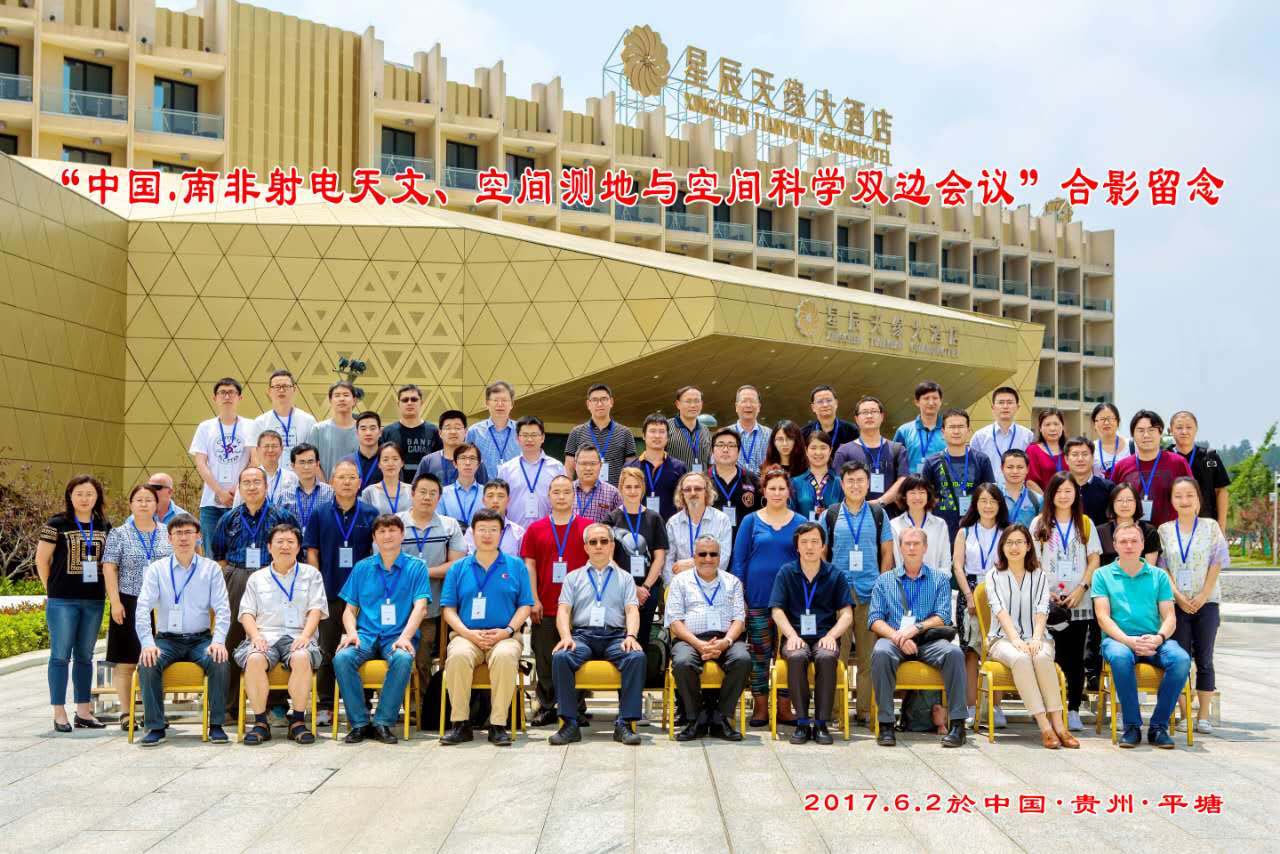China-South Africa Bilateral Workshop on Radio Astronomy, Geodesy and Space Science Held in Guizhou
On June 1-6, 2017, China-South Africa Bilateral Workshop on Radio Astronomy, Geodesy and Space Science was held in Kedu Town of Pingtang County, near the site of Five-hundred-meter Aperture Spherical radio Telescope (FAST).
This is the second workshop of this kind sponsored by Chinese Academy of Sciences (CAS) and organized by NAOC and the National Research Foundation of South Africa. The purpose is to implement the results of the exchange visits and the MoU signed in 2015 between bilateral astronomers and administrators, to build and strengthen collaborations in radio astronomy and space geodesy as well as related technology between the South African and Chinese astronomy communities. The chief scientists from both sides include Prof. Zhiqiang Shen from Shanghai Astronomical Observatory of CAS and Prof. Ludwig Combrinck from HartRAO. The main topics of the workshop focus on VLBI-related molecular masers and massive star-formation, Astrometry, Geodesy, Lunar radio science and VLBI network in South Africa. In addition, there are panel discussions on the topics such as SKA, FAST and MeerKAT. The meeting helps consolidate the cooperation between China and South Africa in the field of radio astronomy, geodesy, space science, construction of VLBI network in South Africa, FAST, MeerKAT and SKA.
During the meeting, participants visited the FAST telescope and were impressed by its engineering construction and technical level. They expressed strong expectations in the production of high-level scientific research results, and showed strong interest in the cooperation in FAST, SKA and MeerKAT.
The workshop is hosted by Shanghai Astronomical Observatory (SHAO) and National Astronomical Observatories (NAOC) of Chinese Academy of Sciences, and co-hosted by Guizhou University. More than 50 participants from National Research Foundation of South Africa, Hartebeesthoek Radio Astronomy Observatory (HartRAO), KwaZuzu-Natal University, CAS Astronomical Community, and related Chinese universities joined the meeting.
